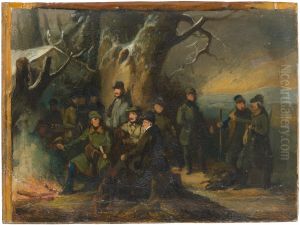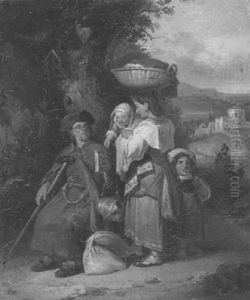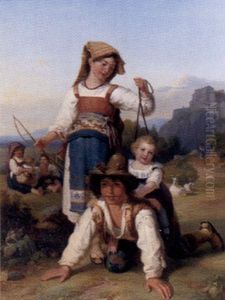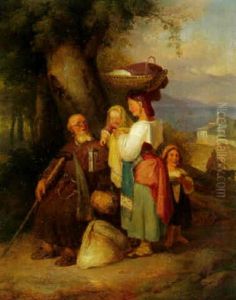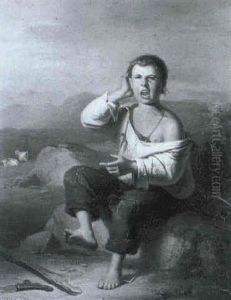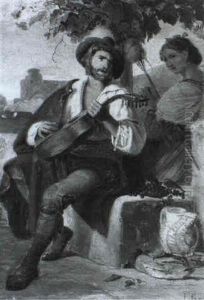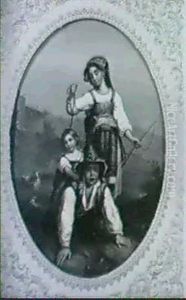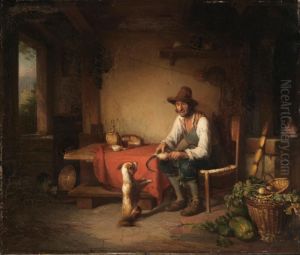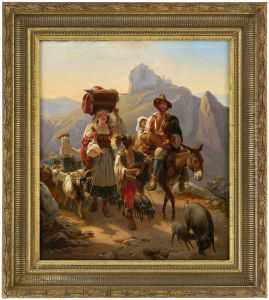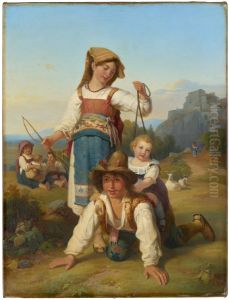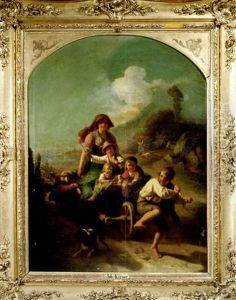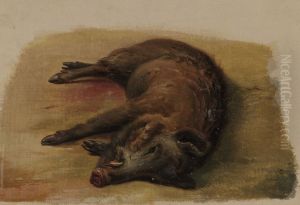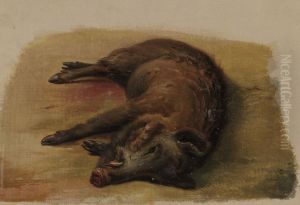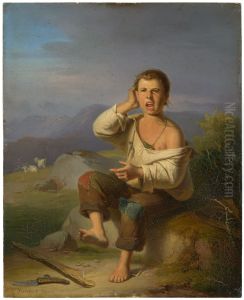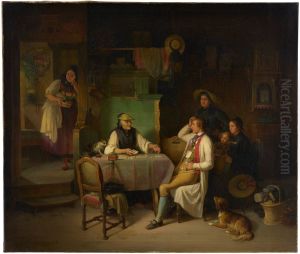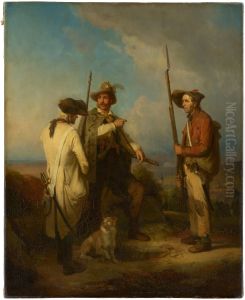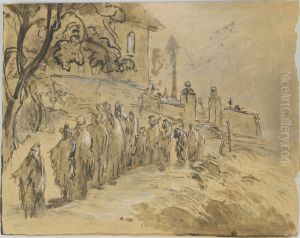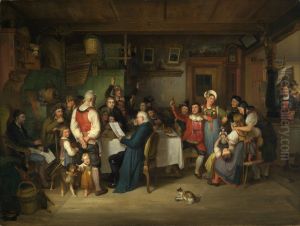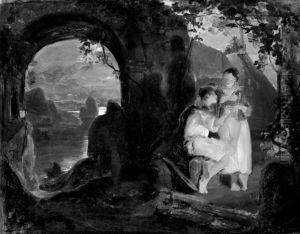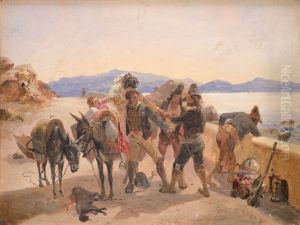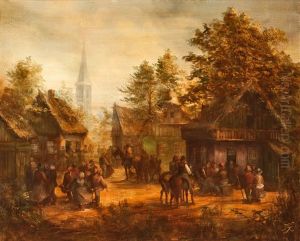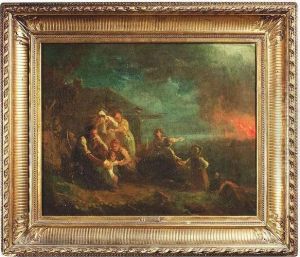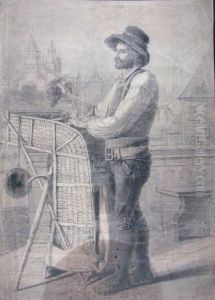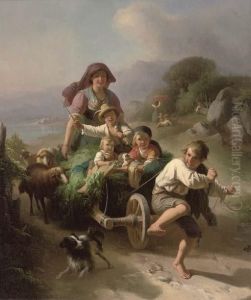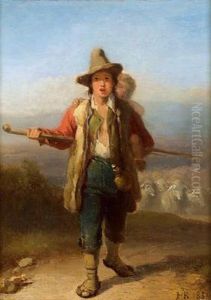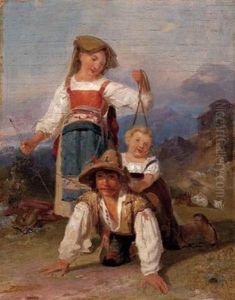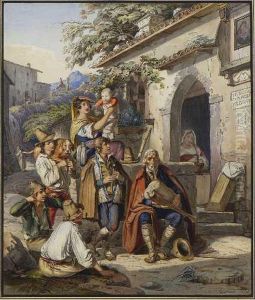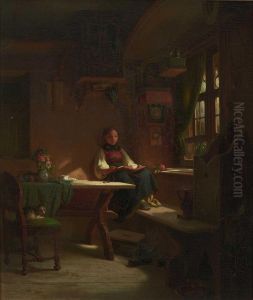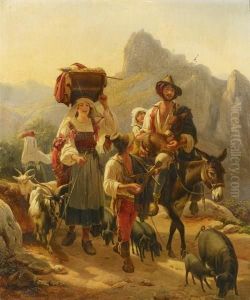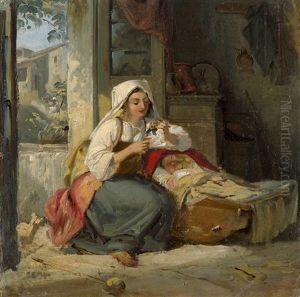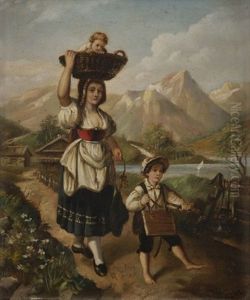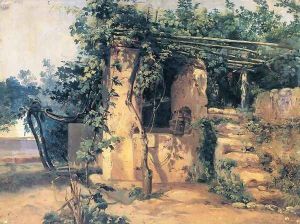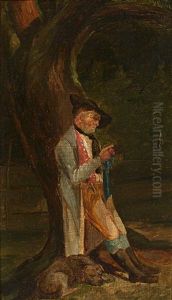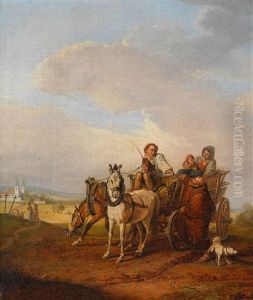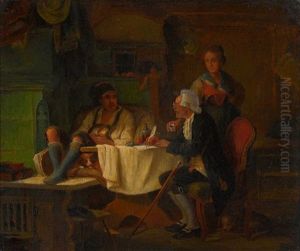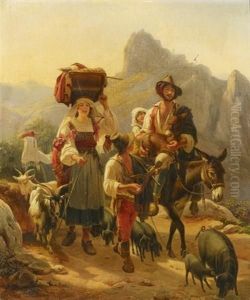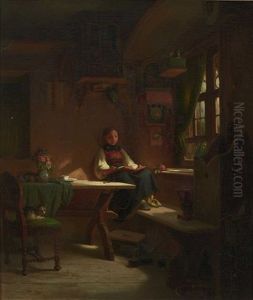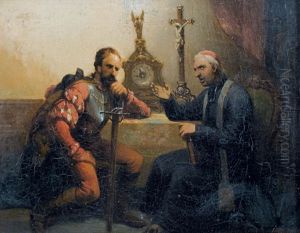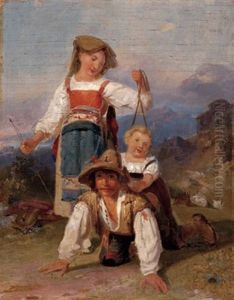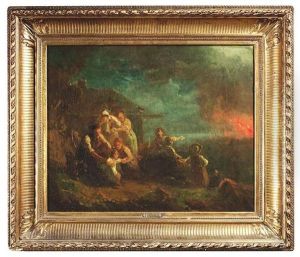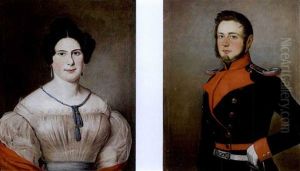Johann Baptist Kirner Paintings
Johann Baptist Kirner was a German painter born on March 15, 1806, in Furtwangen im Schwarzwald, a small town in the Black Forest region of Germany. He was part of the 19th-century Romantic movement, which was characterized by its emphasis on emotion and individualism as well as glorification of the past and nature.
Kirner showed an early talent for art and began his studies at the Academy of Fine Arts in Munich in 1828. He was a student of notable artists such as Peter von Cornelius and Wilhelm von Kaulbach, who were influential figures in the German art scene of the time. Kirner's early works were primarily religious in nature, reflecting the dominant themes of the era and his training under Cornelius, who was known for his large-scale frescoes with religious and mythological subjects.
Throughout his career, Kirner became known for his genre paintings, which depicted scenes of everyday life with a particular focus on the people and customs of the Black Forest. His works often contain a narrative element and are characterized by their attention to detail and use of bright colors. Kirner's paintings were well received during his lifetime and contributed to the romanticized image of rural life in Germany.
Kirner was not only a painter but also an educator. In 1838, he took up a position as a drawing teacher at the Grand Ducal Baden Art School in Karlsruhe, where he influenced a generation of young artists. His teaching position and his art both played a role in helping to establish the reputation of the Karlsruhe school as a center for art in the region.
Johann Baptist Kirner died on July 6, 1866, in Karlsruhe, Germany. His legacy includes a significant contribution to the genre painting of the 19th century and the Romantic movement. His works are still appreciated for their depiction of German rural life and are held in various art collections throughout the country.
